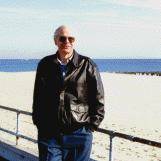
Curated with aloha by
Ted Mooney, P.E. RET

The authoritative public forum
for Metal Finishing 1989-2025

-----
Need idea for science project
I have a science project in grade 12 chemistry due soon...I am interested in electroplating....however, I need to make up a problem...like...what is the effect of temperature or concentration on.... How can I incorporate such a question when dealing with electroplating? Any suggestions? Thank you very much in advance.
Maya- Ontario, Canada
A good science project might be to try to develop a "brightener". Plate quarters or dimes with copper, or plate pennies with zinc (the instructions are on line here). And in addition to the vinegar ⇦in bulk on eBay or Amazon [affil links] and table salt or epsom salt [affil links], add a tiny pinch of various organic materials, one per test, like sugar, saccharin, honey, molasses, hide glue, etc. and see if you can find a brightener that will actually help the plating deposit shiny instead of dull and grainy. If you have any success, we'd like to print it here for future students.

Ted Mooney, P.E.
Striving to live Aloha
finishing.com - Pine Beach, New Jersey
Q, A, or Comment on THIS thread -or- Start a NEW Thread